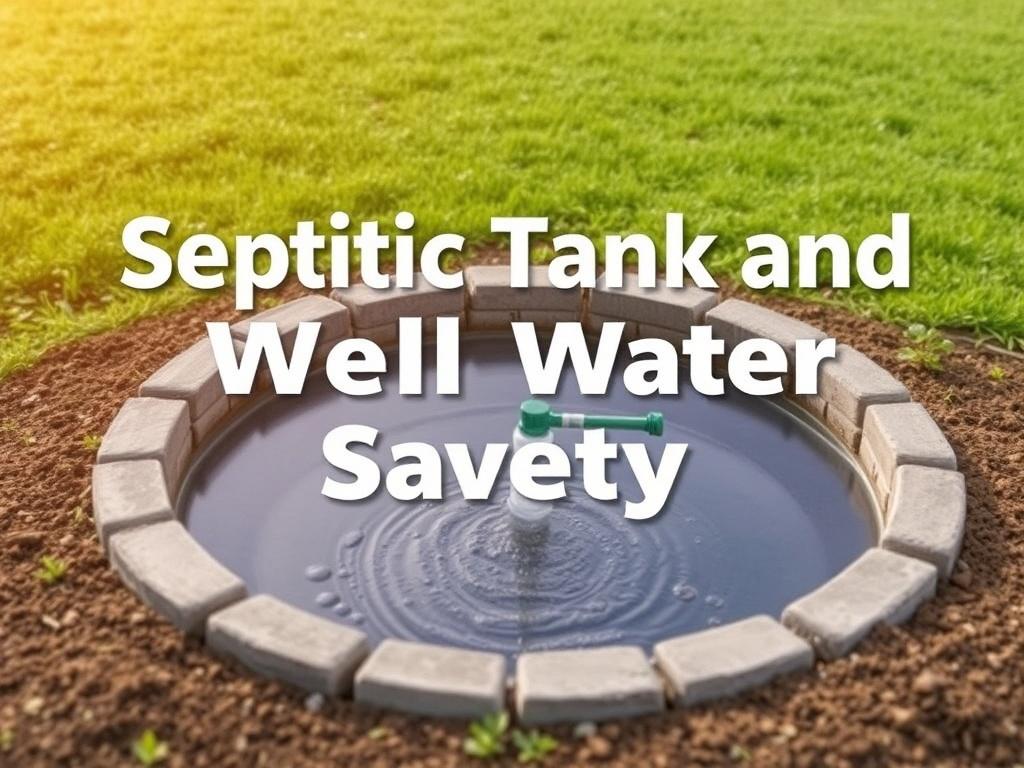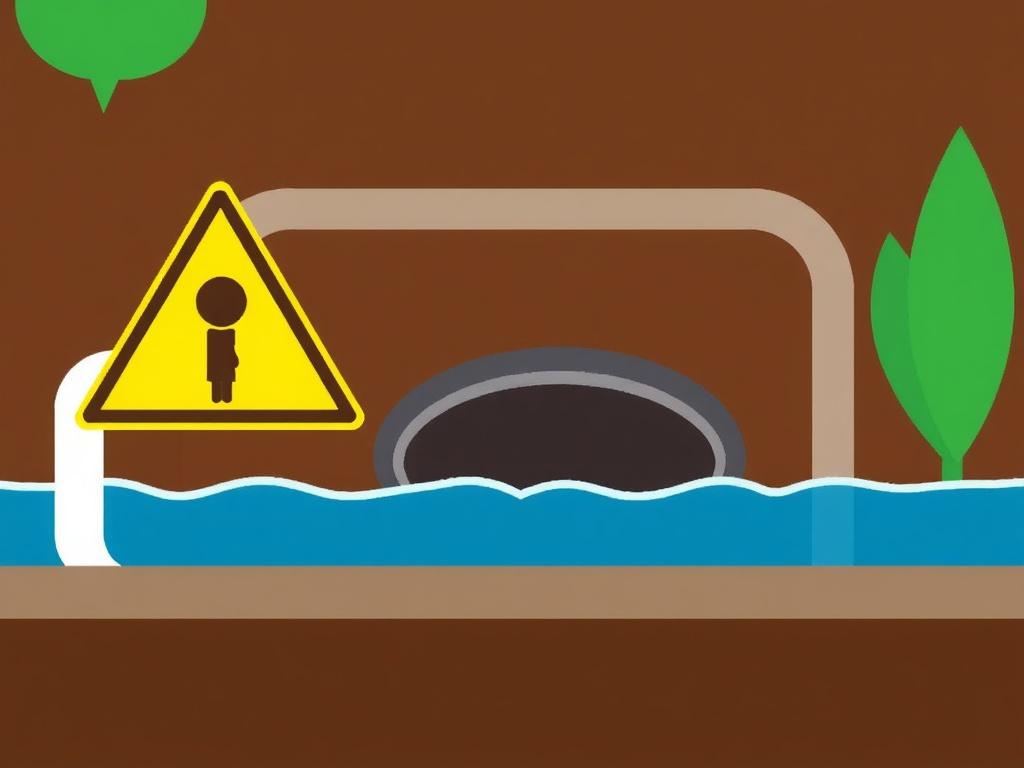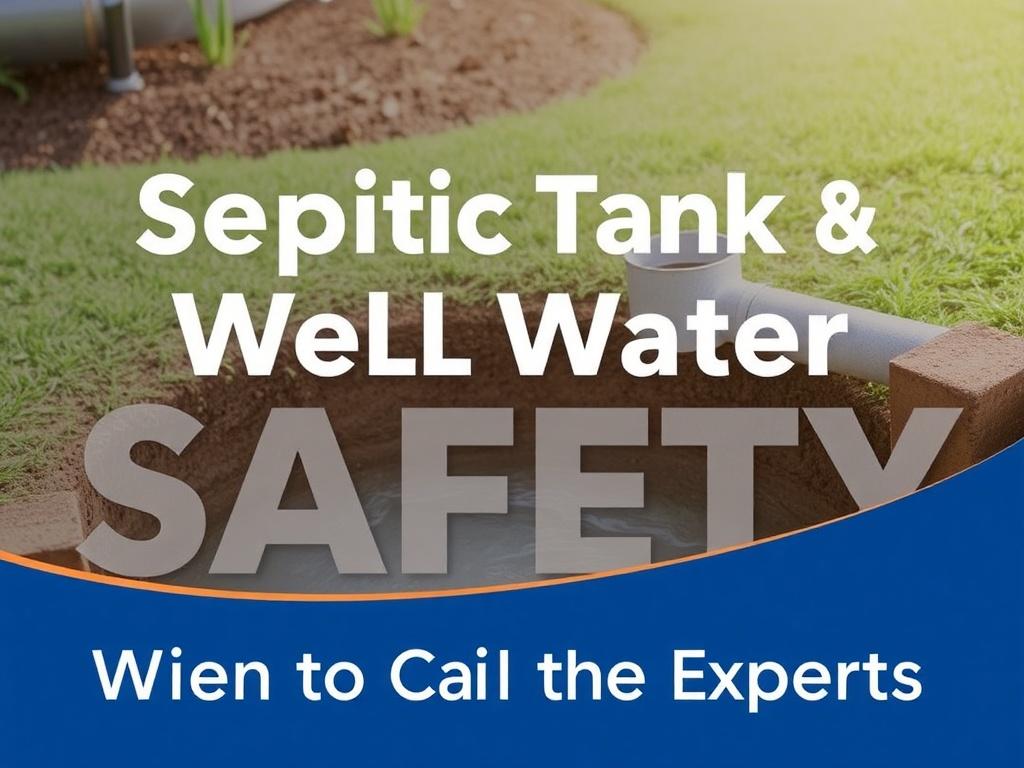When it comes to managing a safe and healthy home environment, two crucial elements often come into play, especially in rural and suburban areas: septic tanks and well water. These systems are lifelines for many households, providing essential waste management and a source of fresh water. However, they also carry risks if not properly maintained and monitored. Understanding septic tank and well water safety is vital for homeowners who rely on these systems daily. This article will take you through everything you need to know, from basic maintenance tips to recognizing potential hazards and ensuring your family’s health is never compromised.
- Understanding Septic Tanks: The Basics
- Key Components of a Septic Tank System
- Well Water: A Precious Resource Needing Careful Protection
- Common Sources of Well Water Contamination
- How Septic Tank Systems Affect Well Water Safety
- Safe Distances Between Septic Systems and Wells
- Preventing Contamination
- Testing and Treating Well Water: Steps to Stay Safe
- Water Treatment Options
- Signs That Your Septic Tank or Well Water May Be Compromised
- Environmental Considerations and Best Practices
- Tips for Safeguarding Your Water and Soil
- Professional Help: When to Call the Experts
- Conclusion
Understanding Septic Tanks: The Basics
A septic tank system is an underground wastewater treatment structure commonly used in areas without centralized sewer systems. Wastewater from toilets, sinks, and other appliances flows into the septic tank where solids settle at the bottom forming sludge while oils and grease float to the top as scum. The relatively clear water in the middle layer is then discharged into a drain field where natural processes break down contaminants.
Many homeowners don’t fully understand how septic tanks work, and that lack of knowledge can lead to costly repairs or health hazards. It’s important to remember that septic tanks need regular inspection and pumping—typically every 3 to 5 years, though this varies depending on household size and tank capacity.
Key Components of a Septic Tank System
- Inlet Pipe: Carries wastewater from the home into the tank.
- Septic Tank: Where solids settle and wastewater treatment begins.
- Outlet Pipe: Allows partially treated water to flow to the drain field.
- Drain Field (Leach Field): Area where wastewater is naturally filtered in the soil.
Recognizing these components can help you better communicate with professionals when scheduling maintenance or solving problems related to your septic system.
Well Water: A Precious Resource Needing Careful Protection
Unlike public water systems, well water is sourced directly from underground aquifers. This water is typically accessed via a private well, and its quality can vary depending on the depth, geology of the area, and potential contamination sources nearby. Given that many families depend solely on well water for drinking, cooking, and bathing, maintaining well water safety is absolutely critical.
Common Sources of Well Water Contamination
| Contamination Source | Description | Possible Health Effects |
|---|---|---|
| Septic Systems | Leakage from poorly maintained or failing septic tanks can introduce bacteria and nitrates. | Gastrointestinal illnesses, methemoglobinemia (“blue baby syndrome”) |
| Agricultural Runoff | Fertilizers, pesticides, and manure seep into groundwater. | Respiratory problems, nerve damage, cancer risks |
| Industrial Pollution | Chemicals or heavy metals contaminate aquifers. | Various chronic health conditions depending on chemicals |
| Natural Contaminants | Arsenic, radon, or uranium occur naturally in some regions. | Long-term cancer risk, organ damage |
Knowing what’s likely to contaminate your well water helps you take proactive steps toward safety.
How Septic Tank Systems Affect Well Water Safety
One of the biggest concerns homeowners face is the potential for septic tanks to pollute nearby well water. If a septic system is old, improperly installed, or damaged, untreated sewage can leach into groundwater supplies, causing bacteria, viruses, and nitrates to contaminate drinking water wells. This scenario is especially risky when the well is located too close to the septic drain field or the tank itself.
Safe Distances Between Septic Systems and Wells
Local regulations often specify minimum distances that septic tanks and drain fields must be from private wells to reduce contamination risk. While requirements vary by jurisdiction, here’s a general guideline:
| Septic System Part | Recommended Minimum Distance from Well |
|---|---|
| Septic Tank | 50 feet (15 meters) |
| Drain Field | 100 feet (30 meters) |
Always check with your local health department to confirm the proper setbacks for your area.
Preventing Contamination
To ensure septic tank and well water safety coexist, here are some simple but essential practices:
- Get your septic tank inspected and pumped regularly by professionals.
- Avoid flushing chemicals, grease, or non-biodegradable items as they disrupt the septic process.
- Keep heavy vehicles and structures off the drain field to prevent soil compaction and damage.
- Test your well water annually for bacteria, nitrates, and other contaminants.
- Address any well issues immediately, such as cracks in the casing or damaged well caps.
Testing and Treating Well Water: Steps to Stay Safe

Regular testing is the foundation of well water safety. However, many well owners are unaware of how to test their water or which contaminants to check for. A well water test should at minimum include:
- Total coliform bacteria: Indicates microbial contamination.
- Nitrates and nitrites: A common sign of septic contamination or agricultural runoff.
- pH levels: To assess acidic or basic water that may corrode pipes.
- Lead, arsenic, and other heavy metals: Depending on local geology or industrial activity.
- Pesticides, volatile organic compounds (VOCs): Based on surrounding land use.
Most local or state health departments provide guidance or services for testing private wells. Many samples can also be sent to certified laboratories for detailed analysis.
Water Treatment Options
If your well water tests positive for contaminants, there are several treatment systems that can help:
| Treatment Method | Effective For | Notes |
|---|---|---|
| Chlorination/Disinfection | Bacteria, viruses | Periodic shock chlorination effective for microbial contamination |
| Activated Carbon Filters | Organic compounds, pesticides, VOCs | Filters taste and odor issues, some chemicals |
| Reverse Osmosis | Nitrates, heavy metals, some bacteria | Effective but can be expensive and waste water |
| Water Softening | Hard water minerals (calcium, magnesium) | Not for microbial contaminants |
| UV Disinfection | Microorganisms | Needs clear water for best performance |
Selecting the right system depends on the specific contaminants found in your water and your household needs.
Signs That Your Septic Tank or Well Water May Be Compromised
Understanding early warning signs can help you address issues before they become emergencies. Look out for these indicators:
- Slow drains, plumbing backups, or sewage odors near the septic tank or drain field.
- Pooling water, soggy ground, or lush vegetation growth over the drain field area.
- Cloudy, foul-smelling, or discolored well water.
- Unexplained illnesses among family members, such as stomach cramps or diarrhea.
- Changes in water taste or the presence of sediment.
If you notice any of these signs, contact a septic service professional and arrange for well water testing immediately.
Environmental Considerations and Best Practices

Septic tank and well water safety go hand in hand with environmental stewardship. For example, limiting the use of pesticides and lawn chemicals near your septic system and well area can reduce the risk of contamination. Additionally, conserving water reduces the load on your septic system and groundwater extraction, fostering system longevity and ecological balance.
Tips for Safeguarding Your Water and Soil
- Plant grass or shallow-rooted plants over your drain field to prevent soil erosion without disturbing the system.
- Direct roof drains and sump pumps away from the septic system to avoid over-saturating the soil.
- Properly dispose of hazardous substances like paint, motor oil, and medications rather than pouring them down drains.
- Be mindful of wellhead protection by fencing off the area and installing sanitary well caps.
By integrating these habits into your routine, you help maintain a healthy environment for both your family and wildlife.
Professional Help: When to Call the Experts

While many septic tank care and well water monitoring tasks can be handled by informed homeowners, certain jobs require professional expertise. Don’t hesitate to call on certified septic professionals when:
- Your septic tank requires inspection, maintenance, pumping, or repairs.
- You need help locating your septic tank or well components for maintenance.
- Your well water shows signs of contamination or requires more complex testing.
- You are planning to install a new septic system or well, requiring permits and inspections.
Qualified professionals have the equipment and knowledge to ensure your systems meet health guidelines and function effectively.
Conclusion
Septic tank and well water safety is a vital but often overlooked aspect of homeownership, particularly for those living outside municipal water and sewage services. By understanding how septic systems work, recognizing the risks that can affect well water, and implementing regular maintenance and testing routines, homeowners can safeguard their family’s health and protect their investment. The connection between your septic system and well water cannot be underestimated—neglecting one impacts the other, creating a ripple effect of contamination risks and costly repairs. Remember, prevention is always better than cure, and a little informed care and attention go a long way toward keeping your septic and water systems safe, reliable, and beneficial for years to come.
Помогла вам статья?






